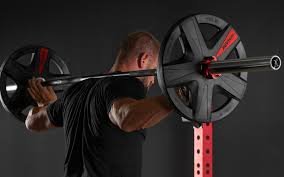
sport balls
Introduction to Sport Balls
Sport balls are among the most universal pieces of athletic equipment in the world. From the roar of a stadium filled with football fans to a quiet tennis court on a summer morning, the ball is central to the action. While they may seem simple at first glance, sport balls come in a variety of designs, sizes, and materials that are carefully engineered to suit the specific demands of each game. Understanding these differences is essential for athletes, coaches, and even casual players who want to get the most out of their equipment.
The Evolution of Sport Balls
The earliest sport balls were made from natural materials such as stitched leather stuffed with hair, plant fibers, or even animal bladders. Ancient civilizations in China, Mesoamerica, and Egypt all had their own versions of ball games, often tied to ritual or cultural significance. Over centuries, advancements in materials and manufacturing changed the game—literally. The introduction of vulcanized rubber in the 19th century revolutionized ball performance, creating more consistent bounce and durability. Modern sport balls now combine synthetic materials, precise engineering, and even computer-aided design to meet strict performance standards.
Key Characteristics of Sport Balls
Every sport ball is designed with a specific set of requirements in mind. Some of the most important characteristics include:
- Size and weight: Standardized for fairness and uniformity in professional play.
- Material: Determines durability, grip, and performance.
- Surface texture: Impacts grip, aerodynamics, and player control.
- Internal structure: Can be inflated, solid, or have multiple layers for different effects.
Even small differences in these characteristics can significantly change how a ball behaves during play.
Common Types of Sport Balls
Football (Soccer Ball)
The most popular sport ball globally, the football is typically made of synthetic leather panels stitched or thermally bonded together, with a latex or butyl bladder inside. Its size, weight, and panel structure are regulated by FIFA for professional matches. The ball must be light enough for controlled dribbling yet durable enough for powerful strikes.
Basketball
A basketball’s pebble-grain surface provides grip for dribbling and shooting. Made of leather, composite, or rubber, it’s inflated to maintain bounce. Indoor basketballs are softer and offer better grip, while outdoor versions are more rugged to withstand rough courts.
Volleyball
Volleyballs are lighter than many other sport balls to allow for quick passes and spikes. Their smooth, synthetic surface and precise panel design help maintain trajectory in fast-paced play. Beach volleyballs are slightly larger and softer for comfort in bare-handed play.
Tennis Ball
Tennis balls are pressurized, hollow rubber spheres covered in felt. This felt layer influences aerodynamics and bounce, while the internal pressure maintains lively play. Balls lose pressure over time, which is why competitive players often replace them frequently.
Rugby Ball
With its oval shape, a rugby ball allows for easy handling, passing, and kicking in various weather conditions. Made of leather or synthetic material, it has a textured surface for grip and a sturdy internal bladder for shape retention.
Baseball and Softball
These balls have a cork or rubber core wound with yarn and covered in leather or synthetic material. Baseballs are smaller and harder; softballs are larger and softer, designed for a slower-paced but equally skillful game.
Cricket Ball
Cricket balls are made of a solid cork core wrapped tightly with string and encased in a leather shell. They are heavy, hard, and require skillful handling by bowlers and fielders. The seam plays a crucial role in controlling swing and spin.
Golf Ball
Golf balls have a solid or multi-layered core and a dimpled surface to reduce drag and increase distance. Different compression ratings allow golfers to choose a ball that matches their swing speed and playing style.
American Football
Recognized by its pointed oval ends and laces, the American football is made from leather or composite material with an internal bladder. It is designed for both grip and aerodynamic performance in passing and kicking.
Materials Used in Sport Balls
The choice of materials affects how a ball performs, how long it lasts, and how it feels in play. Common materials include:
- Leather: Traditional, durable, but can absorb moisture.
- Synthetic leather: Offers durability and consistent performance in all weather.
- Rubber: Common in inexpensive balls and those for outdoor use.
- Composites: Provide tailored performance characteristics for specific sports.
- Textiles and felt: Used for covering balls like tennis and certain indoor balls.
Manufacturing Process
Sport ball manufacturing typically follows these steps:
- Material preparation – Cutting panels or preparing molded shells.
- Assembly – Stitching, bonding, or molding panels around a bladder or core.
- Pressurizing – Inflating the ball to its required PSI.
- Quality control – Testing for weight, circumference, bounce, and durability.
High-end balls are often hand-stitched for precision, while mass-market versions may be machine-made for efficiency.
Choosing the Right Sport Ball
The “right” ball depends on the sport, playing environment, and player skill level. Key considerations include:
- Regulation size and weight for competitive play.
- Surface suitability – indoor, outdoor, turf, or court.
- Durability vs. performance – a professional-grade ball may perform better but wear out faster.
- Budget – balance between cost and quality.
For example, a basketball used for outdoor street games should prioritize durability and grip over the softer feel of an indoor model.
Care and Maintenance
Proper care extends a ball’s life and maintains performance:
- Store balls in a cool, dry place to prevent material degradation.
- Avoid over-inflation, which can strain seams and bladders.
- Keep surfaces clean; dirt and moisture can reduce grip and cause premature wear.
- For pressurized balls like tennis balls, consider storage containers that maintain internal pressure.
Innovations in Sport Ball Technology
Modern sports engineering has brought new features to balls, such as:
- Micro-textured surfaces for improved aerodynamics.
- Thermal bonding to eliminate panel stitching for better water resistance.
- Smart balls with embedded sensors to track speed, spin, and trajectory.
These innovations have been embraced in professional sports, providing both better gameplay and data for coaching and performance analysis.
Popular Sport Ball Brands
Some brands have become synonymous with certain sports due to their consistent quality:
- Adidas and Nike – leading in football, basketball, and multi-sport balls.
- Wilson – iconic for tennis, basketball, and American football.
- Spalding – official supplier of NBA basketballs.
- Mikasa – known for volleyball excellence.
For more details, you can explore Wilson’s official product page or check FIFA’s equipment standards to see how top-level footballs are certified.
Common Mistakes When Buying Sport Balls
- Choosing a ball meant for indoor use for outdoor play, leading to fast wear.
- Ignoring official size and weight requirements for league play.
- Buying low-cost imitations that lack proper bounce and durability.
- Overlooking inflation needs and maintenance.
Safety Considerations
Safety may not be the first thing that comes to mind with sport balls, but it is important. Using the wrong size or weight can cause strain or injury, especially for children. Always check that balls are inflated to the proper pressure and that they suit the age group using them.
The Role of Sport Balls in Culture
Sport balls are more than just equipment—they’re cultural symbols. A single football can unite nations during the World Cup. A signed basketball can be a treasured keepsake. Even casual backyard games often revolve around a beloved ball that carries memories of family gatherings and friendly matches.
Final Thoughts
From ancient origins to high-tech innovations, sport balls have evolved to meet the needs of athletes and the demands of their games. Whether you are a professional competitor, a weekend player, or a parent buying equipment for a young athlete, understanding the differences in ball design, materials, and use will help you choose wisely. With the right care and selection, your sport ball will not only perform well but also last for years of play.






